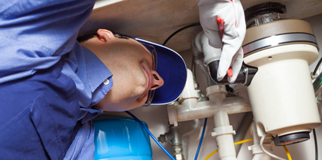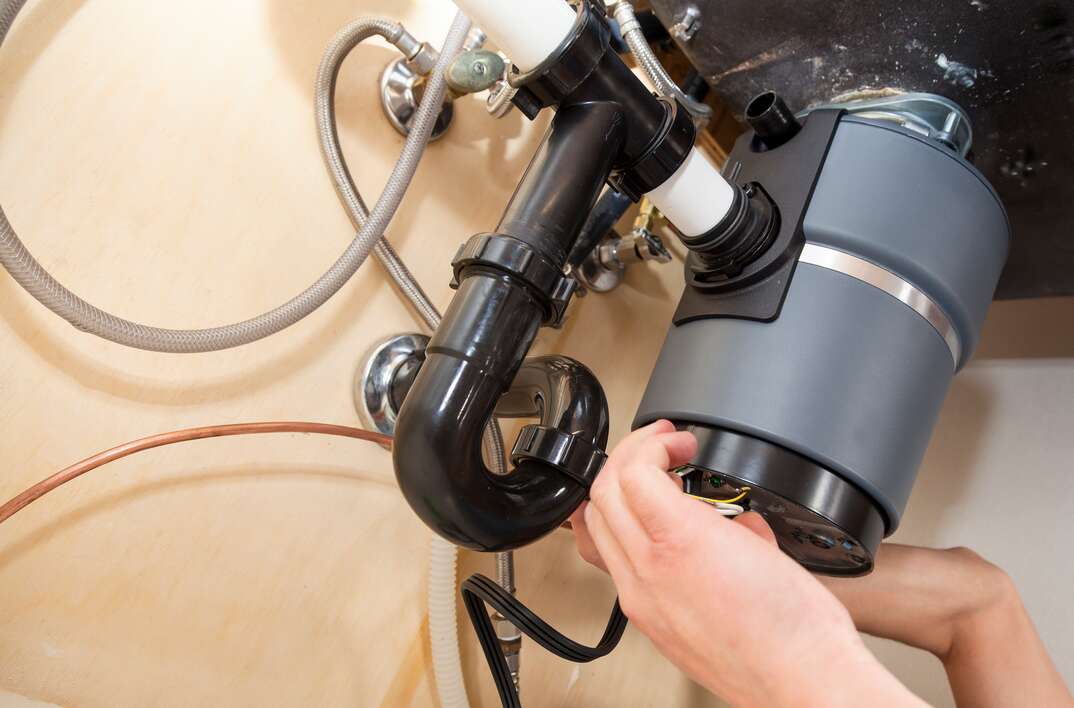Confirmed Ways to Fix a Leaking Waste Disposal Unit
Confirmed Ways to Fix a Leaking Waste Disposal Unit
Blog Article
How do you feel about Garbage Disposal Leaking From Bottom?

Waste disposal unit are essential kitchen area devices that help in getting rid of food waste successfully. Nonetheless, a leaking garbage disposal can be a discouraging and unpleasant trouble to deal with. Fortunately, numerous leakages can be dealt with conveniently with a couple of simple steps. In this article, we will discuss how to fix a dripping waste disposal unit successfully.
Intro
Garbage disposals are installed under cooking area sinks and are made to shred food waste into smaller items, allowing it to travel through the plumbing system easily. While these tools are typically dependable, leakages can happen with time due to deterioration, loose connections, or damage to the device.
Typical Reasons For Leakages in Rubbish Disposals
Worn Seals and Gaskets
Seals and gaskets play a vital role in stopping water from leaking out of the waste disposal unit. With time, these elements can degrade, leading to leaks around the disposal device.
Loose Links
The connections between the waste disposal unit and the pipes system can end up being loosened with time, creating water to leakage out during operation.
Cracks or Holes in the Disposal Unit
Physical damages to the waste disposal unit, such as fractures or openings in the housing, can likewise lead to leaks.
Determining the Source of the Leak
Prior to trying to repair a leaking waste disposal unit, it is essential to recognize the resource of the leak. This can usually be done via visual examination or by performing simple tests.
Visual Examination
Check the garbage disposal unit meticulously for any kind of indications of water leak. Pay very close attention to locations around seals, gaskets, and connection factors.
Testing for Leakages
One way to check for leaks is by running water with the disposal device and checking for any kind of visible indicators of leakage.
Devices and Products Needed for Fixing a Leaking Garbage Disposal
Before beginning the repair process, collect the essential tools and materials, consisting of a screwdriver, flexible wrench, plumbing's putty, replacement seals or gaskets, and epoxy or patching product for fixing splits or openings.
Step-by-Step Overview to Fixing a Leaking Garbage Disposal
Turn Off the Power
Prior to attempting any type of repair services, make sure that the power to the waste disposal unit system is shut off to avoid the risk of electric shock.
Locate the Leak
Identify the exact area of the leakage and identify the cause.
Tighten up Links
Use a wrench to tighten up any kind of loose connections between the disposal device and the plumbing system.
Change Seals or Gaskets
If the leakage is due to used seals or gaskets, eliminate the old components and change them with new ones.
Patching Cracks or Openings
For cracks or openings in the disposal unit, use epoxy or an ideal patching material to secure the damaged location.
Testing the Garbage Disposal After Repair Work
As soon as the repair is total, examine the garbage disposal by running water with it to make certain that the leak has been settled.
Preventive Maintenance Tips to Stay Clear Of Future Leakages
To prevent future leaks, it is necessary to perform routine maintenance on your waste disposal unit. This includes keeping it tidy, staying clear of putting non-food items or hard objects down the disposal, and periodically checking for leaks or other problems.
Final thought
To conclude, repairing a leaking garbage disposal is a relatively straightforward procedure that can be finished with fundamental tools and products. By complying with the steps laid out in this write-up and practicing preventive upkeep, you can keep your garbage disposal in good working problem and avoid pricey repairs in the future.
What to Do About a Leaking Garbage Disposal
A leaking garbage disposal often goes unnoticed until you confront a sopping cabinet, a foul-smelling puddle, or an audible drip-drip-drip from the unit. The fix can be frustrating, too, because the leak can stem from a number of components in the system. Fortunately, with a little sleuthing, you can zero in on the leak and—depending on the exact location—stop the icky oozing and repair the component that caused it. Worst case scenario, if it turns out that the garbage disposal must be replaced, installing a new one is a reasonable do-it-yourself task for those with basic plumbing skills. Read on to keep the cash you’d otherwise hand over to a pro.
Prepare to find the leak
Prior to testing the garbage disposal for leaks, unplug it at the wall outlet and turn off the power from the breaker box to prevent electrical shock. Then insert a watertight sink stopper into your sink drain and wipe the unit dry with a clean cloth. In any handy container, mix a few drops of food coloring into a few cups of water, and pour the dyed water onto the sink stopper to help you locate the leak.
Investigate the source
the top, where the disposal meets the sink drain the side, where the dishwasher hose or main drain pipe connects to the disposal or the bottom of the unit Inspect each of these locations while gliding a light-colored rag over the unit; the dyed water will readily show on the rag and reveal the location of the leak. If a leak isn’t immediately apparent, remove the sink stopper and pour a few more cups of dyed water down the sink drain, then check for leaks again. Leaks near the top of the unit are more likely to show themselves while the sink is plugged, while side and bottom leaks are more noticeable while the sink is unplugged.
The metal sink flange that sits directly inside the sink drain is typically sealed around the top with plumber’s putty (a clay-like sealant) and then secured from under the sink with bolts. If the plumber’s putty deteriorates, or the bolts loosen, the flange can no longer form a watertight seal between the sink drain and the disposal—which could cause a leak at the top of the unit.
To reseal the leaky flange, you must first detach the garbage disposal. Start by loosening the screws securing the main drain pipe to the disposal, then loosen the screws in the metal clamp securing the dishwasher hose to the disposal and detach the drain pipe and dishwasher hose from the disposal. Loosen the screws in the mounting ring that connects the disposal to the metal mounting assembly beneath the sink, then pull down the disposal and carefully set it on a clean, dry surface. Loosen the bolts in the mounting assembly with a wrench, then pull down the mounting assembly and set it near the disposal.

We were shown that editorial about Why Is from an acquaintance on a different website. Kindly take the time to promote this article if you enjoyed it. We value reading our article about How to fix a pretty consistent leak from my garbage disposal.
Call Today Report this page